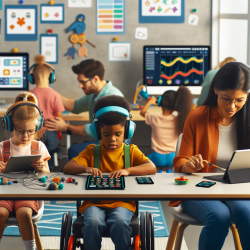As practitioners dedicated to the well-being and development of children with neurodevelopmental disorders, we constantly seek innovative and effective ways to support our young clients. The recent research paper, The BEHAVE application as a tool to monitor inclusive interventions for subjects with neurodevelopmental disorders, presents an invaluable resource that leverages technology to enhance the outcomes of applied behavior analysis (ABA) interventions. Let's delve into how this tool can be utilized to improve our practice and outcomes for children.
Understanding the BEHAVE Application
The BEHAVE application is a web-based, highly customizable tool designed to support data collection and automatic analysis of datasets in single-case experimental designs (SCEDs). SCEDs are particularly effective for monitoring and evaluating the impact of interventions on individuals with neurodevelopmental disorders. The BEHAVE application simplifies the data collection process, making it accessible to both professionals and caregivers, thereby fostering a collaborative approach to intervention.
Key Features of the BEHAVE Application
- Customizable Measures: The application allows users to create custom measures tailored to specific behaviors and contexts.
- Data Collection: Facilitates the collection of accurate and reliable data through direct observations, choice items, number items, range items, four quadrant items, and text items.
- Automatic Analysis: Provides automatic statistical analyses, helping users interpret data without requiring advanced statistical skills.
- Community Sharing: Users can share measures and data with others, promoting a community of practice.
- Educational Support: Offers video tutorials, user guides, and contextual help to assist users in navigating the application.
Case Studies: Real-World Applications
The research paper highlights two case studies involving kindergarten children with severe language and communication impairments. Carlo and Dario, both diagnosed with autism spectrum disorder, participated in ABA interventions supported by the BEHAVE application. The application facilitated data collection across different contexts, including clinical settings and home environments, involving both therapists and caregivers.
Results
The interventions significantly increased the mand repertoire (requests made by the children) in both Carlo and Dario. The BEHAVE application enabled the therapists to monitor progress, identify challenges in generalization, and promptly address them. The active participation of caregivers, supported by the application's user-friendly interface, played a crucial role in the successful generalization of learned skills to various contexts.
Implications for Practice
The BEHAVE application demonstrates the power of integrating technology into our practice to enhance the effectiveness of interventions for children with neurodevelopmental disorders. By utilizing this tool, practitioners can:
- Ensure accurate and reliable data collection, essential for data-driven decision-making.
- Facilitate collaboration between therapists, educators, and caregivers, fostering a holistic approach to intervention.
- Identify and address challenges in real-time, ensuring continuous progress and skill generalization.
Encouraging Further Research
While the BEHAVE application has shown promising results, continuous research and development are essential to refine and expand its capabilities. Practitioners are encouraged to explore the application, implement its features in their practice, and contribute to the growing body of evidence supporting its efficacy.
To read the original research paper, please follow this link: The BEHAVE application as a tool to monitor inclusive interventions for subjects with neurodevelopmental disorders.










